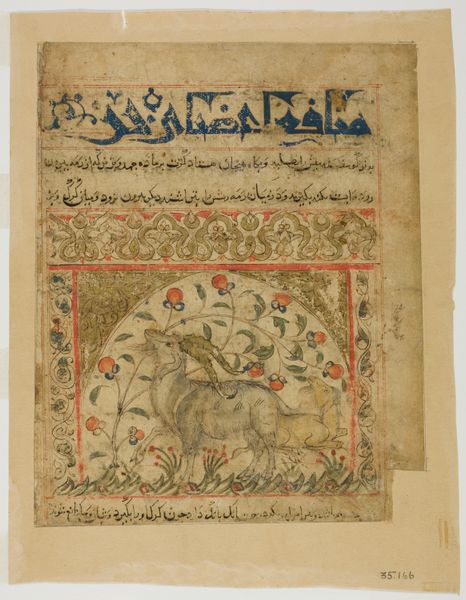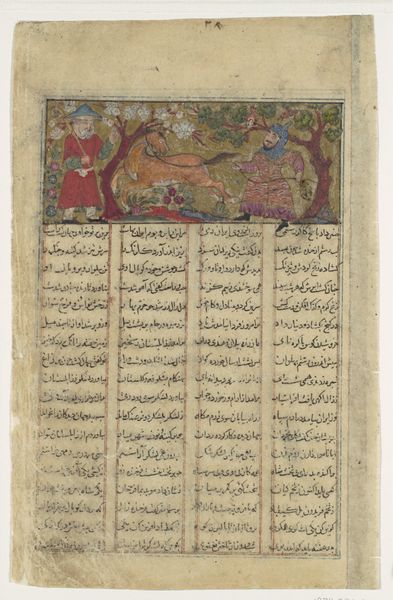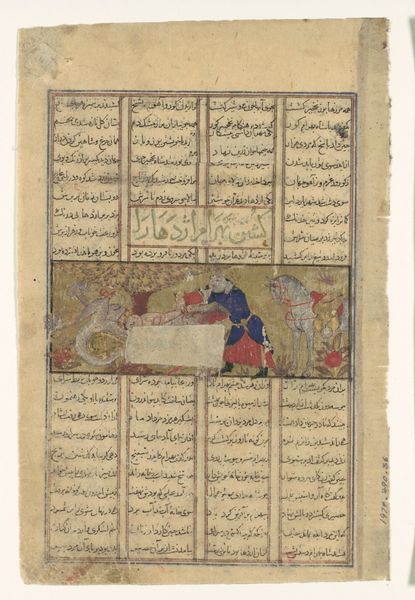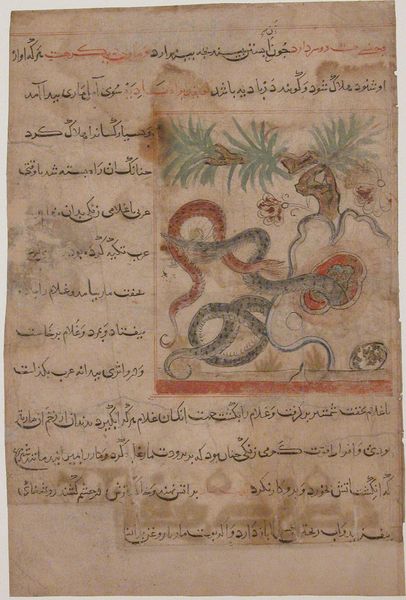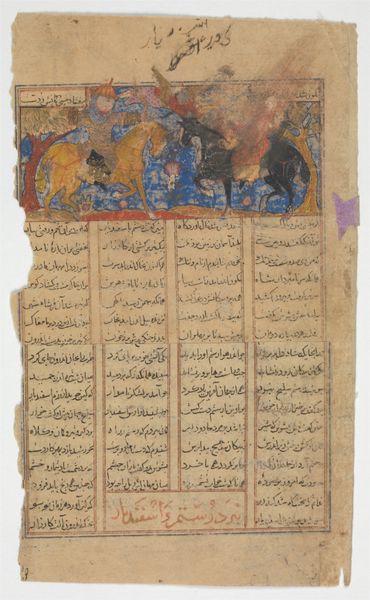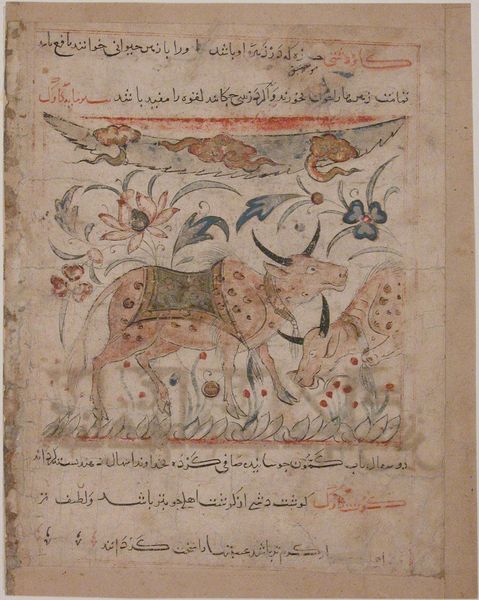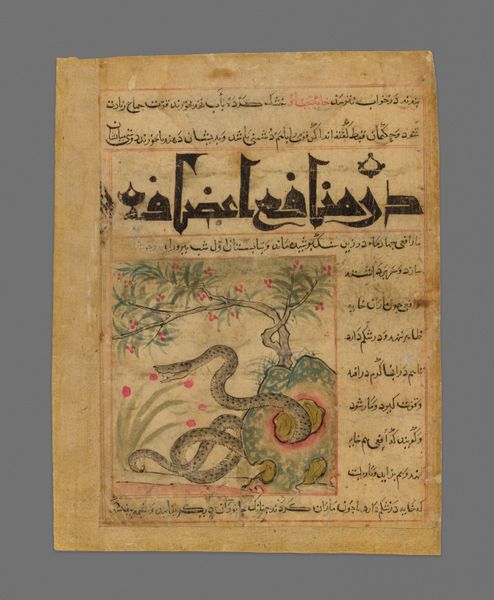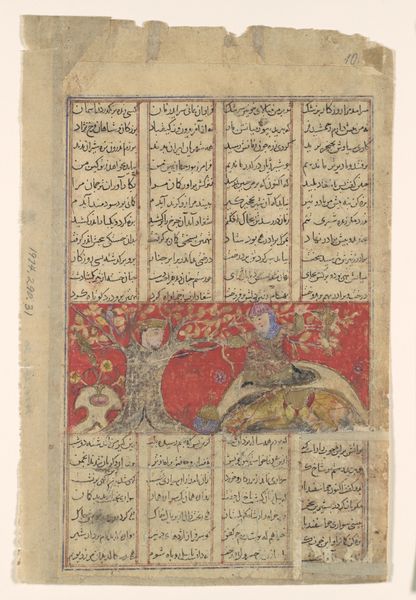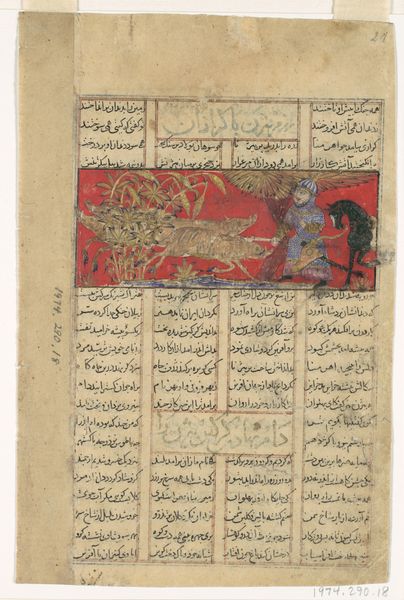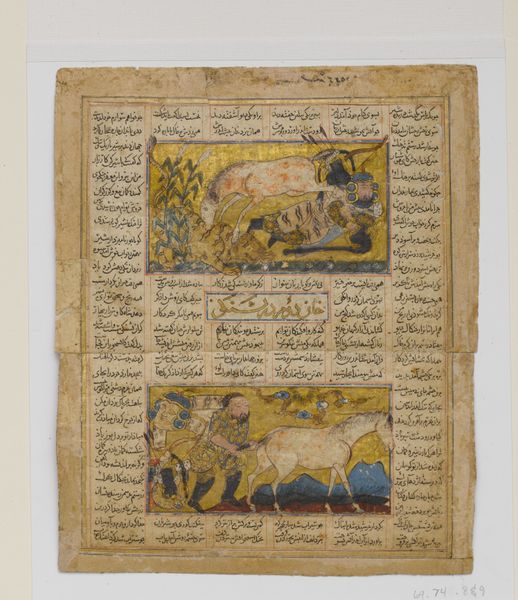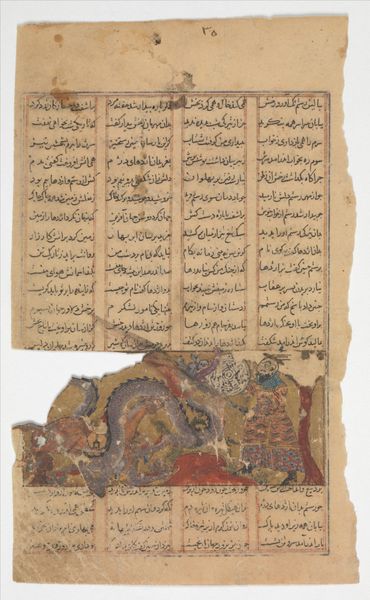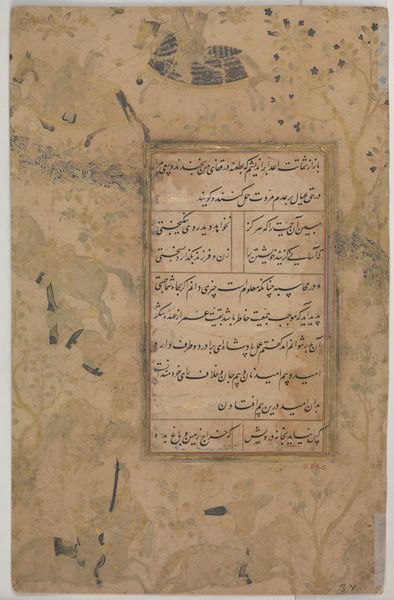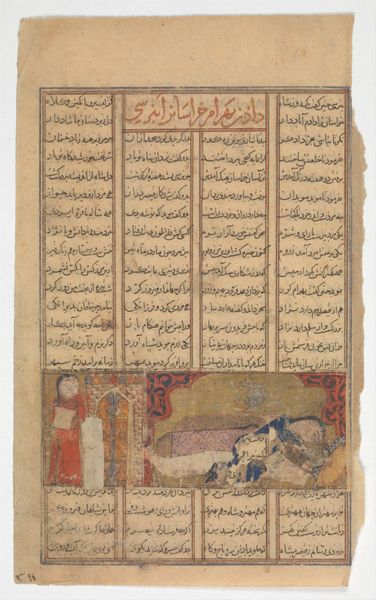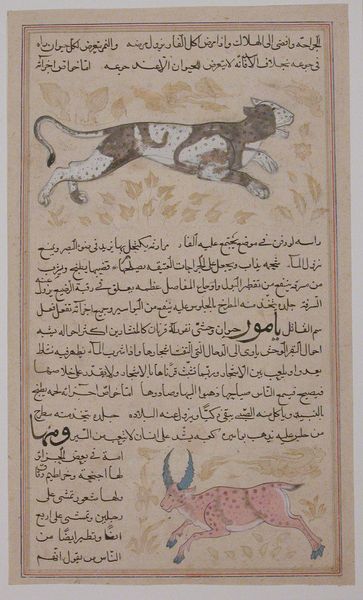
drawing, paper, watercolor, ink
#
drawing
#
medieval
#
water colours
#
landscape
#
figuration
#
paper
#
watercolor
#
ink
#
islamic-art
#
miniature
#
watercolor
Dimensions: 9 x 6 3/4 in. (22.86 x 17.15 cm) (sheet)
Copyright: Public Domain
This painted page from the Manafi al-Hayavan depicts two deer amidst stylized flora and cloud forms. The anonymous artist, working in ink and opaque watercolor, has created a symmetrical composition that balances text and image. The page's structure is divided horizontally, with a calligraphic text block above an illustration of two deer, one with impressive antlers. The deer are rendered with delicate, flowing lines and a subtle palette of browns and greens. Note the cloud motifs which seem to float in the pictorial space. This arrangement invites a semiotic reading: the text, functioning as a symbolic system, anchors the image, and the stylized flora and fauna serve as signs of the natural world, mediated through cultural and artistic conventions. Together, text and image construct a layered narrative, where visual and linguistic elements intertwine. The interplay between the detailed rendering of the natural elements and the symbolic use of script challenges the viewer to negotiate between observation and interpretation.
Comments
minneapolisinstituteofart almost 2 years ago
⋮
This folio depicting two stags comes from a dispersed copy of a medical text titled Manafi al-Hayavan (On the Uses Derived from Animals); a Christian doctor who was a court physician to the Abbasid caliph in Baghdad wrote the original in Arabic in a.d. 941. In the late thirteenth century, the Mongol ruler of Iran and Iraq, Ghazan Khan, ordered a copy of the Manafi to be translated into Persian. Because this leaf was copied from that volume shortly after the Mongol conquest of Persia, there is a strong Chinese influence in the stylized clouds above the stags and in the treatment of the flowers.
Join the conversation
Join millions of artists and users on Artera today and experience the ultimate creative platform.
